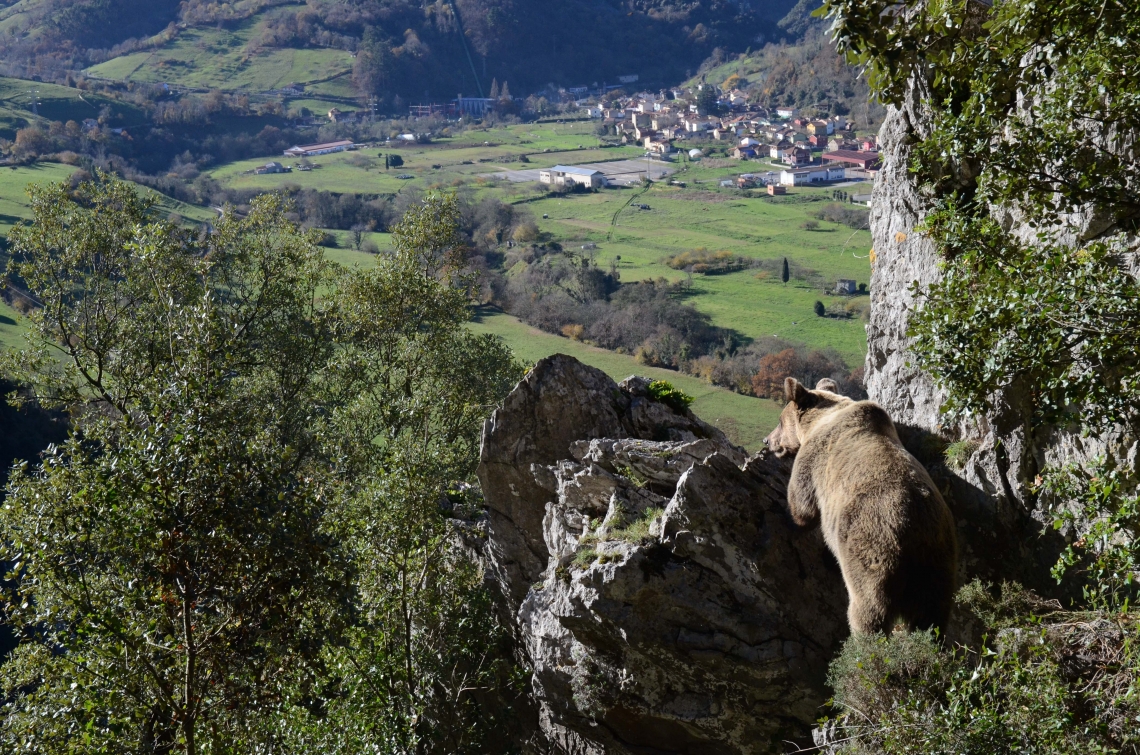
Brown bear looking down at town in Cantabrian Mountains, Spain_Vincenzo Penteriani
Humans have experienced actual and perceived conflicts with all 8 species of bears for thousands of years — interactions that we now refer to as human–bear conflicts (HBC). We define HBC as any situation where wild bears use (undesirably) or damage human property; where wild bears harm people; or where people perceive bears to be a direct threat to their property or safety. Since conflicts are by definition 2-sided, there must also be some negative human response. That response could be immediate and direct, such as killing the bear. Or that response might be more protracted and subtle, such as instilling a negative attitude toward bears or a fear of bears, which affects future actions (such as pre-emptive retaliation) or adverse opinions about their conservation.
Many interactions between people and bears do not result in conflicts. People may experience or even seek out opportunities to view bears in the wild, which promotes positive attitudes. Also, even potential problems can result in a positive outcome, averting a conflict. For example, a person who learns to secure their garbage or erect an electric fence around their garden could end up feeling good about keeping a bear out of trouble.
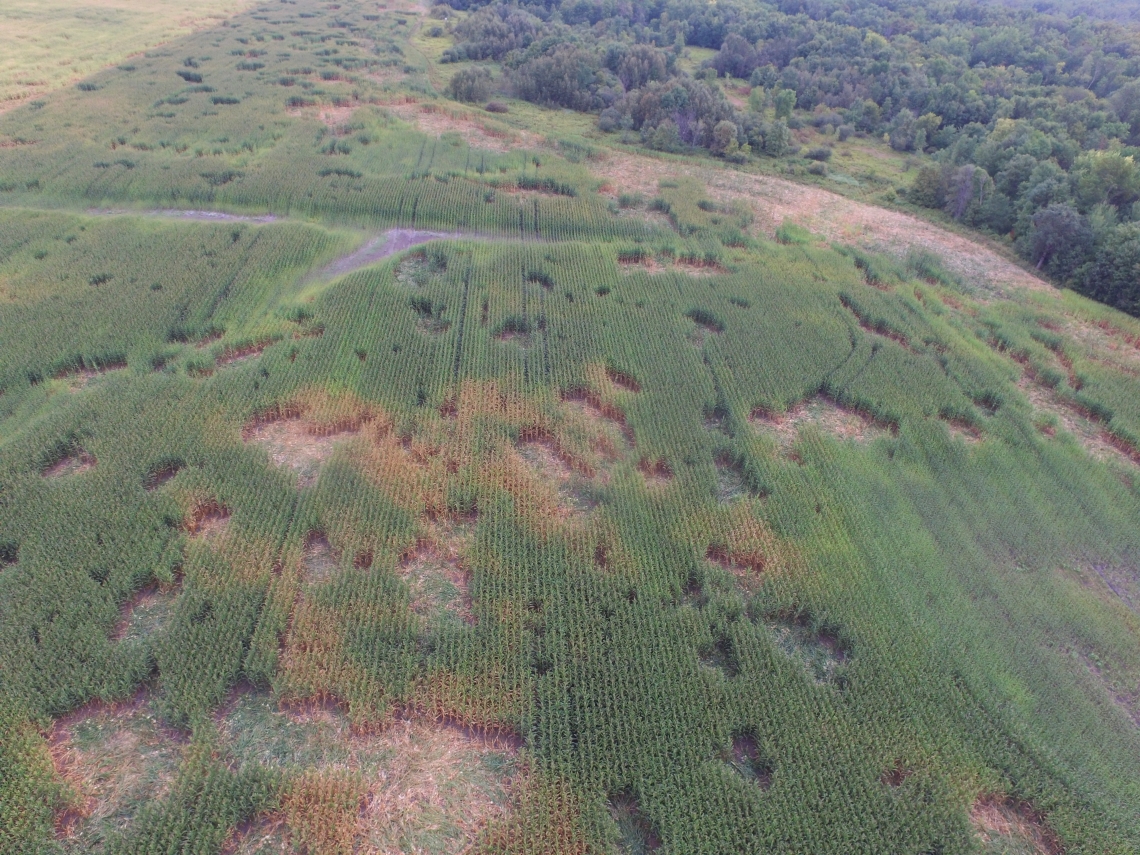
Corn damage caused by American black bears in Minnesota USA, viewed from a drone_Minnesota DNR
Historical Perspective
As human populations have increased and occupied (or altered) most of the productive landscapes in the world, conflicts between people and bears have increased. This has occurred for a number of reasons: (1) bear habitat has been diminished in both quantity and quality, so they are forced to live closer to people; (2) bears are attracted to foods that people grow and eat; and (3) people are generally intolerant and often fearful of bears living nearby, so historically killed them in response to damage, or to reduce future potential damage. As a result, the number and distribution of bears was reduced. This was especially evident in Europe, where centuries of persecution led to the elimination of brown bears from many countries. Brown bears even once lived throughout the Middle East and into North Africa, with bear attacks in Egypt reported in the Bible. Over a much shorter time period (roughly 1850–1930), brown (grizzly) bears were purposefully eliminated from 98% of their historic range in western U.S. (and completely eliminated from Mexico by the 1960s), largely out of fear and to protect livestock from predation. American black bears were also sharply reduced or eliminated from a number of U.S. states, but because they are viewed as less dangerous (hence more tolerated by people), and also because they are more tolerant of living near people, they have rebounded from historical persecution more quickly.
In the last couple of decades, human–bear conflicts have generally increased around the world. In some cases, this may be due to expansion of people into bear range, or deterioration of bear habitat. In other cases, bears have increased or expanded their range, possibly due to a concerted conservation effort, or possibly due to changing land-use. Oftentimes it is unclear why conflicts have increased: some people immediately assume it signifies an increase in bears; others assume that people have done something to bring it on — but the situation can be complex, arising from periodic or long-term changes in the natural food supply, driving bears to seek more readily-available anthropogenic food sources.
Effects on People and Bears
Human–bear conflicts have negative impacts on bears and also negative impacts on people. While conservationists and wildlife managers promote increasing and expanding bear populations, they are also recognize that this can lead to increasing conflicts. People may initially be onboard for recovering a small bear population, but change their minds when they become personally adversely affected. Hence, it is vital that conservation programs include plans for dealing with potentially increasing conflicts that arise from successful rebuilding of a population. This is especially the case in resource poor countries that do not have immediate access to technical support, government support, tools, or the financial resources needed to mitigate conflicts with bears.
The ultimate goal of a successful conservation effort is a robust bear population, but in human-dominated landscapes (as most landscapes are), an equal consideration is how that population affects humans in the vicinity. Bears are not typically aggressive towards people, but they do occasionally attack, and people are harmed or killed. Also, people can lose vital crops or livestock, or their homes destroyed. Hence, bear biologists have invested considerable effort into developing mitigation tools and practices that help promote coexistence between people and bears.
Local communities generally endure the primary economic and social burden of conserving bears. Successful strategies to reduce HBC seek to balance the needs of bears and local people. However, strategies vary greatly and are not always successful, sometimes even leading to increases in the frequency and intensity of conflicts. Socio-economic, biological, cultural and political factors all have important roles in mitigating HBC. Long-term strategies to reduce HBC must address all of these components in a coordinated and integrated manner with a view toward the welfare of both bears and people.
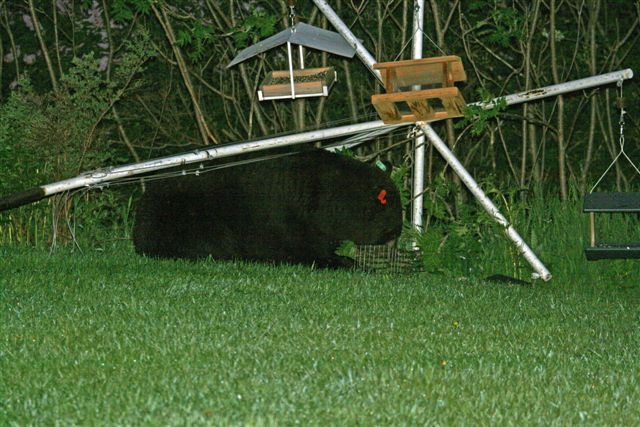
Damage to birdfeeder caused by American black bear Minnesota USA_photo submitted by public

Free ranging yak vulnerable to brown bear predation on Tibetan plateau_D Garshelis
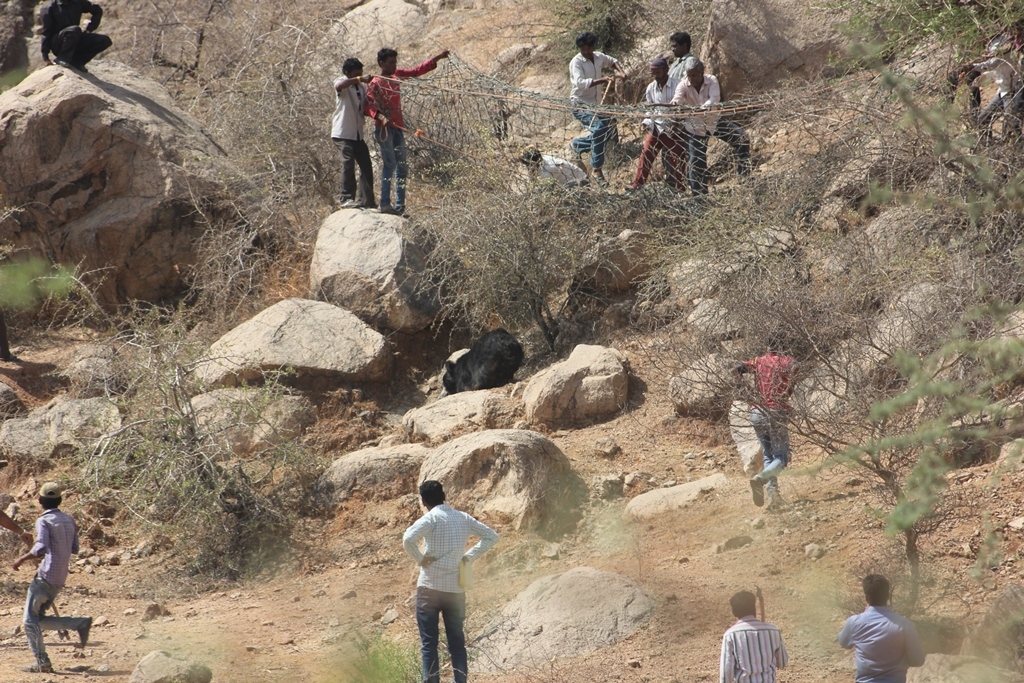
People chasing sloth bear out of village in Gujarat India_N Dharaiya
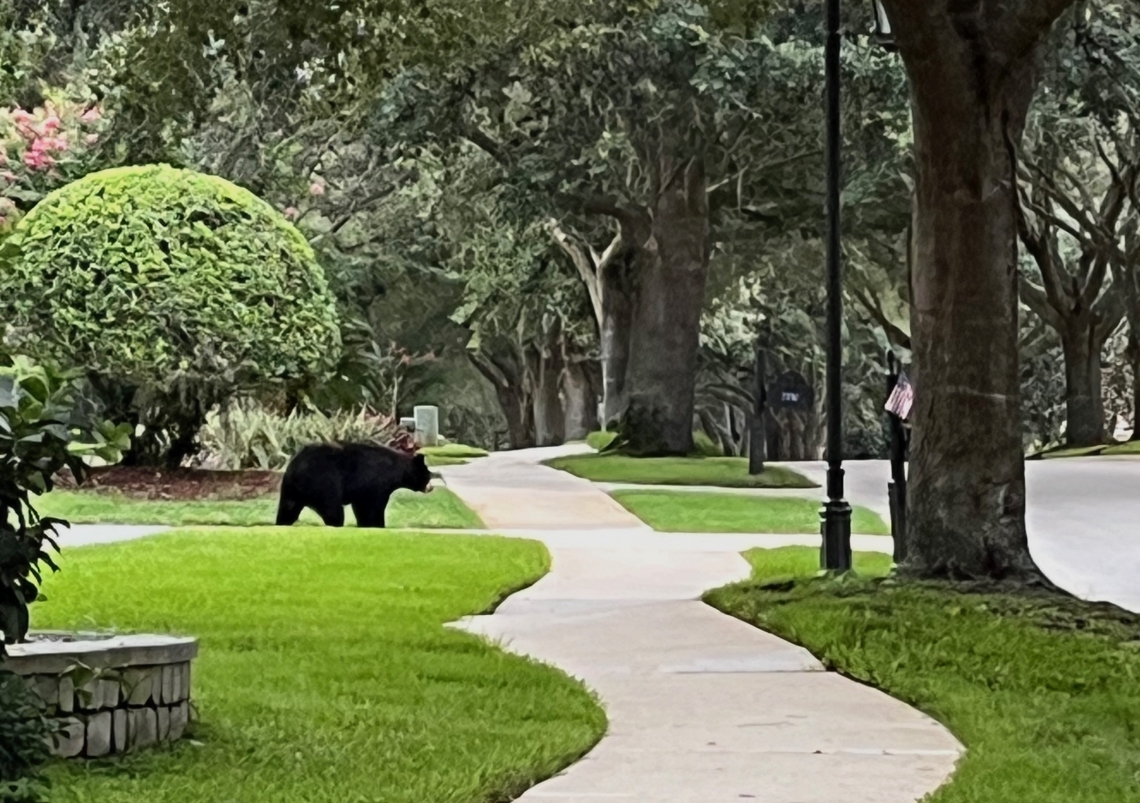
American black bear calmly strolling through a neighborhood in Florida, USA: a result of an expanding bear population and limited habitat. People in this neighborhood have adjusted their behaviors to coexist with bears without conflict_A Darrow